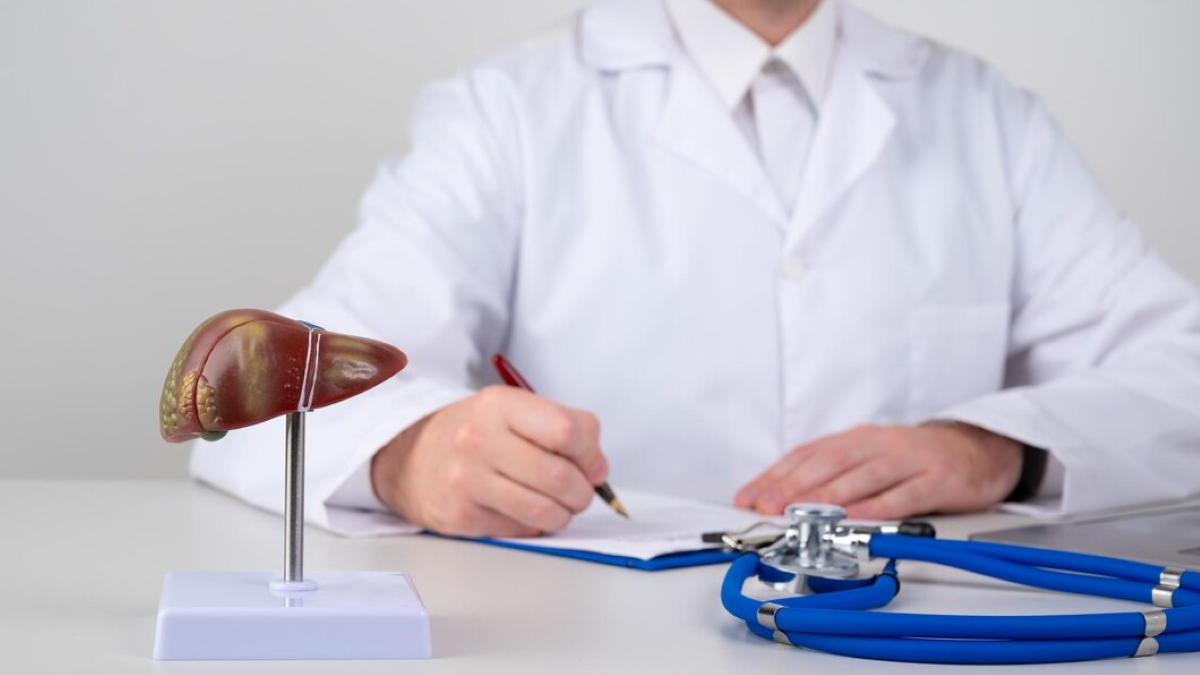
Knowledge Center

Nephrology
| 30 June 2025
Kidney stones are a health condition that refers to the crystallization of minerals and salts in your kidneys, often causing intense pain and discomfort. Crystals that form under normal circumstances, i.e. small stones, usually pass on their own during urination, while larger crystals or obstructing stones may require medical treatment. Since kidney stones can grow larger if not treated with medication, it is important to treat them as soon as they are detected. However, it is important to understand the various medical treatments for kidney stones to manage this condition effectively. In this blog, we will explore the range of medical treatments available, from medications to surgical interventions, and discuss when each option is necessary.
Small kidney stones can usually be treated with natural remedies or dietary changes. However, for larger stones that are displaced within the kidney anatomy and are unlikely to pass on their own or for types that cause severe symptoms, medical treatment for such kidney stones varies depending on their size and type. However, with the advancement of medicine, various options and advanced kidney stone treatment techniques are available, which doctors may often recommend depending on the size, location, and type of stone as well as the severity of symptoms. So, let’s understand when medical treatment is necessary.
Medical treatment for kidney stones is usually necessary when:
For early symptoms and uncomplicated patients, medication may often be the recommended first-line treatment for kidney stones. Medications for kidney stones are used either to manage symptoms and pain or to help the stones pass more easily. Some are used solely as a medication for kidney stone pain relief. However, currently, a wide range of drug-based options are used in medical treatments for kidney stones.
Pain is a major symptom and immediate concern for patients with kidney stones, making pain management for kidney stones essential. Managing kidney stones with medication may initially involve using over-the-counter pain relievers such as ibuprofen, acetaminophen, or naproxen for mild to moderate pain. However, they are typically used as a prescription drug medication for kidney stone pain relief only to reduce the risk of immediate dependency.
Alpha-blockers, such as tamsulosin (Flomax), are medicines that relax the muscles of the tube that carries urine from the kidneys to the bladder, reducing spasms in these muscles, and may help pass a kidney stone more quickly and with less pain. In managing kidney stones with medication, treatment with alpha-blockers is particularly effective for stones located in the lower ureter.
Potassium citrate is often prescribed as a preventive medication for kidney stones to prevent stones from growing or coming back. Patients with recurrent kidney stones, especially those made of calcium oxalate or uric acid, may be advised to manage kidney stones with medication. This medication works by making the urine less acidic, which helps dissolve stones and prevents new stones or crystals from forming.
Diuretics, these important and effective medications for kidney stones such as hydrochlorothiazide, chlorthalidone, or indapamide, commonly known as water pills, are sometimes used to prevent kidney stones. By increasing urine output, especially in people with calcium stones, diuretics help flush out excess minerals, resulting in a reduction in stone formation. This is why these medications are usually used as part of a comprehensive kidney stone medical treatment plan that also includes dietary changes to complement treatment.
When managing kidney stones with medication is not enough to control them, or when the stones are large or located deep in the kidney that they may not pass on their own, minimally invasive kidney stone removal may be recommended as one of the kidney stone surgery options. These procedures are designed to remove or break up your kidney stones with minimal damage to the body.
Extracorporeal shock wave lithotripsy (ESWL) is a non-surgical kidney stone treatment procedure that uses sound waves to break up kidney stones into smaller pieces that can be easily removed from the urinary tract. Usually, this type of shock wave therapy for kidney stones is most effective for stones located in the kidney or upper ureter and can be performed on an outpatient basis.
In this kidney stone removal procedures involve lying on a water-filled cushion while the doctor directs targeted shock waves at the stone. The procedure usually takes about an hour and may cause some discomfort, although shock wave lithotripsy for kidney stones gives you a quicker recovery time.
Ureteroscopy for kidney stones is a procedure in which a small, flexible scope (ureteroscope) is inserted into the ureter through the urethra and bladder to locate and remove crystal or break up kidney stones. This procedure is particularly useful for stones located in the lower urinary tract or stones too large for the ESWL procedure.
During ureteroscopy, laser treatment for kidney stones may be used to break up the stone. The stone fragments are then either removed with an instrument or left to pass naturally. Ureteroscopy can also be performed on an outpatient basis, with a shorter recovery time than other surgical options.
Doctors often perform laser lithotripsy in conjunction with ureteroscopy to treat kidney stones. In this laser treatment for kidney stones, a laser fiber is passed through the ureteroscope to break up the stone into smaller pieces, which can then be re-extracted or passed naturally. Laser lithotripsy is a highly effective minimally invasive kidney stone removal for stones located in the ureter and lower kidney.
Percutaneous nephrolithotomy (PCNL) may be needed for kidney stones that are larger or more complex. This is a surgical treatment for kidney stones. For this, surgeons make a small incision in the back to access the kidney directly. The stone is then located and removed using a nephroscope. Doctors will usually recommend PCNL when the stone is more than 2 cm in size, resists other non-surgical treatments for kidney stones, or causes severe symptoms.
Although PCNL involves more intrusive procedures than ureteroscopy or ESWL, it is considered minimally invasive kidney stone removal than standard surgery, and the recovery period is usually shorter.
Doctors may recommend surgical interventions for kidney stones when drug-based treatment for kidney stones, and minimally invasive kidney stone removal procedures are not effective. In current treatment, kidney stone surgery options include open surgery, laparoscopic surgery, and robotic-assisted surgery. All these options work to break up large stones that are causing severe obstruction into smaller pieces and remove them from the kidney. In addition, in some rare cases, surgical intervention may be required to remove kidney stones in which the crystals are trapped or are associated with infection.
Nowadays, open surgery for kidney stones is rarely recommended or performed. As there are advancements in kidney stone treatment through advanced techniques such as minimally invasive techniques, in most cases, it can be managed. However, it may still be the only option in some cases, such as in cases of severe pain, very large stones, or if the stone is blocking the flow of urine. Since open surgery requires a longer recovery time and has a higher risk of complications than other treatments, it is important to clearly understand when to consider surgery for kidney stones.
During open surgery, the doctor makes a large incision in the armpit or back to access the kidney and remove the stone. The surgeon may use this procedure to remove your stone directly or temporarily insert a stent to drain urine in some cases. You may have to stay in the hospital for a few days to a week after surgery, and it may take 2 to 4 weeks to recover after surgery for kidney stones. Additionally, post-surgery recovery for kidney stones may be a complicated process that requires more than the usual level of care.
Laparoscopic surgery is a minimally invasive kidney stone removal technique that is a less invasive alternative to open surgery. It involves using a camera and special instruments to remove kidney stones through several small incisions. Laparoscopic surgery has a shorter recovery time and less post-treatment care for kidney stones. Also, there are fewer complications after surgery for kidney stones than open surgery, making it the preferred option in most cases when surgery is the only option.
Robotic-assisted surgery is one of the most advanced kidney stone treatment techniques that allows for even greater precision in removing kidney stones. Surgeons use controlled robotic arms that are controlled by a computer system and can perform complex surgery with improved precision and control as compared to traditional surgical treatment for kidney stones. The precision of robotic-assisted surgery combined with the expertise of skilled surgeons offer several other benefits, including fewer scars and a quicker recovery time. Patients with robotic-assisted surgery often experience less pain, and the hospital stay is shorter than with open surgery. This is why it allows easier post-surgery recovery for kidney stones.
Kidney stone disease is a very difficult diagnosis to receive. However, it can be treated with medication or minimally invasive kidney stone removal procedures, so don't ignore any noticeable symptoms you may be having as they could result in more serious issues, which may be a major cause of complicated surgical treatment for kidney stones. Before the kidney stone effect progresses to urinary tract obstruction and worsens the pain and discomfort, immediate medical attention is necessary to stop these.
Although kidney stones can be an uncomfortable and annoying ailment, there are numerous medical treatments for kidney stones that can help manage and get rid of them. Contemporary medicine provides a range of options to meet the needs of individual patients, including minimally invasive kidney stone removal through medications for kidney stones and non-surgical and surgical treatment for kidney stones that help remove kidney stones. Advanced kidney stone treatment techniques for complex situations and medication for kidney stone pain relief can overcome kidney stone difficulties. Modern medical treatments for kidney stones offer a variety of solutions to suit each patient's needs. However, along with them, it is important to understand the different kidney stone treatment options, when they are needed, and post-treatment care for kidney stones can help you cope with kidney stone challenges and achieve a full recovery.
All Copyrights Reserved. © 2025 Jaslok Hospitals | Managed by Digimanic